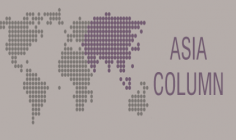
Overview of Competition Policy and Law of Korea in 2017 By LEE Hwang (Korea University School of Law)1
I. OVERVIEW
The 19th presidential election held on May 9, 2017, caused tremendous change to Korean society as the result of the so-called “Candlelight Revolution”, an unprecedented event in Korean history. The radical change of political ideology from conservatism to progressivism called for a fundamental change of direction in Korean economic and social policies, faced with the structural difficulties of continually stagnating economic growth amid bipolarization. For this reason, the current administration selected so-called “economic democratization” as the larger objective and adopted a so-called “3-wheel growth theory” to support that goal. The 3-wheel growth theory consists of 3 major policies, which are ‘income-led growth’, ‘growth by innovation’, and ‘realizing a fair economy’. Competition policy is not only exclusively responsible for realizing a fair economy but is also recognized as a major policy tool to promote growth by innovation, and therefore takes a more substantial role as an essential component of economic democratization. As competition policy stands out as a leading policy tool to achieve the policy direction of the current administration, which is considerably distinct from the former administrations, competition policy has attracted much more attention than the past, when it was relatively alienated. Moreover, the substance a
...THIS ARTICLE IS NOT AVAILABLE FOR IP ADDRESS 216.73.216.89
Please verify email or join us
to access premium content!
